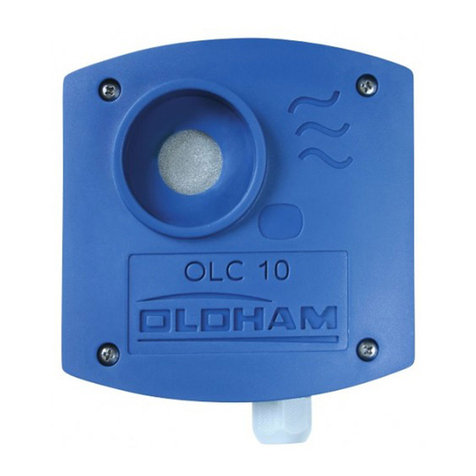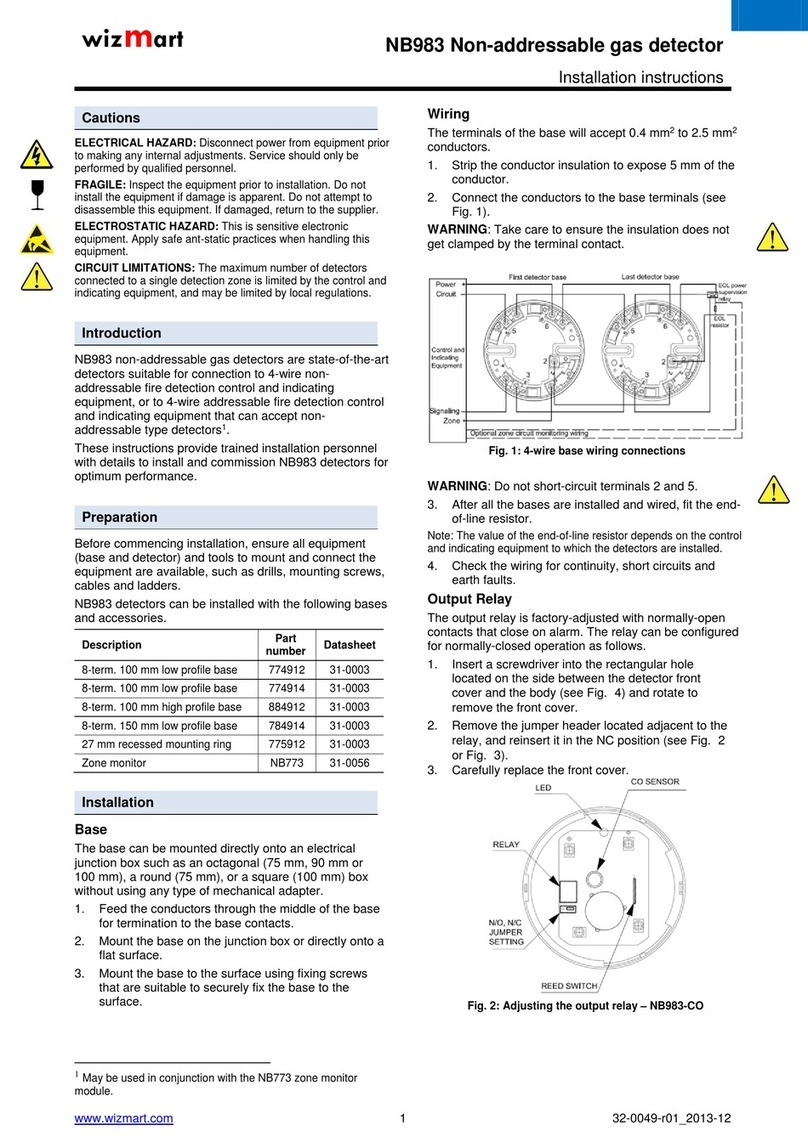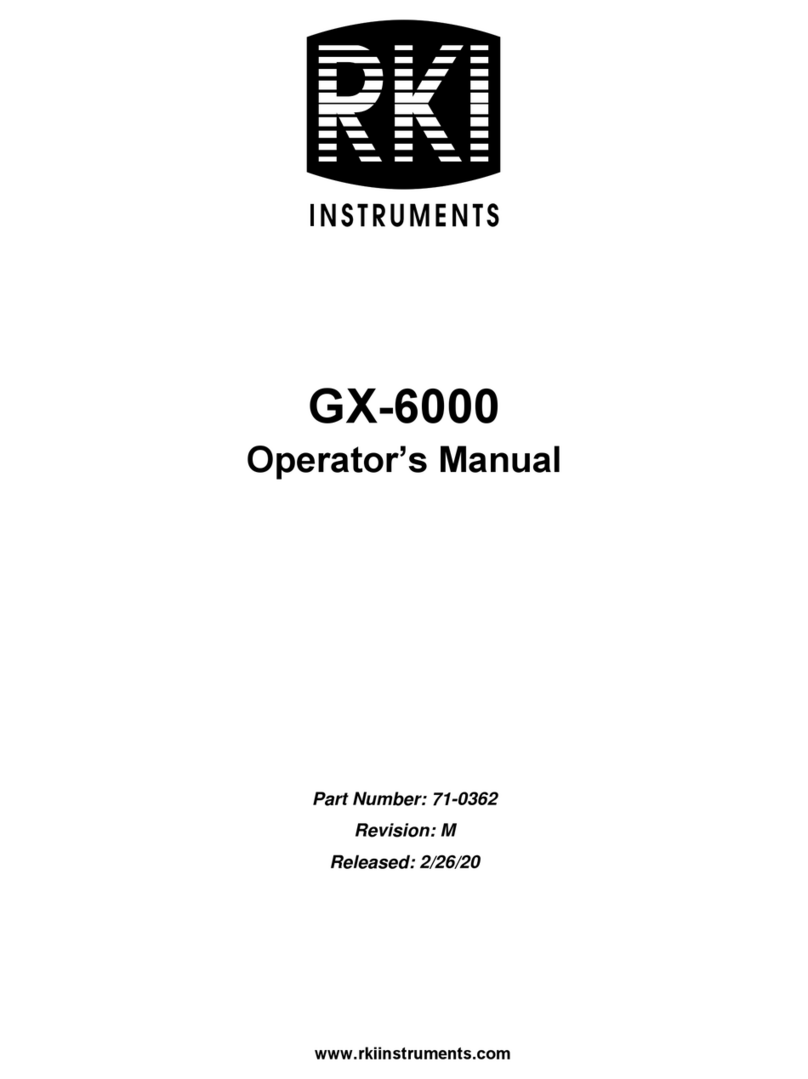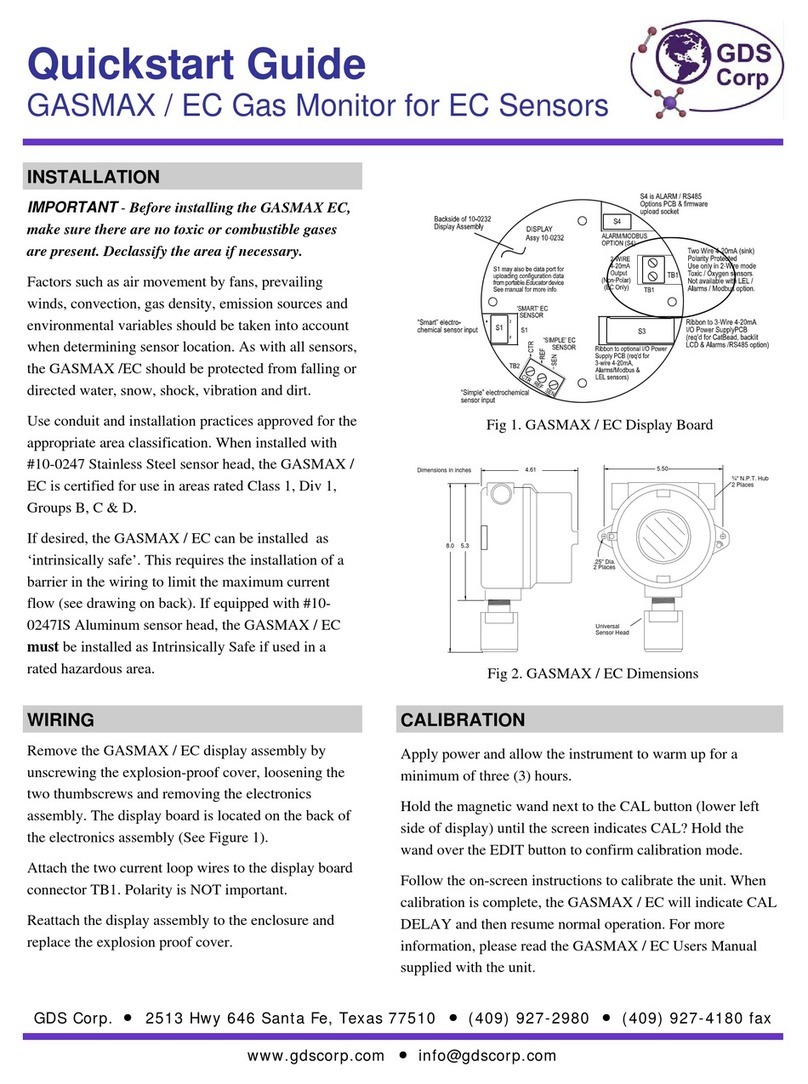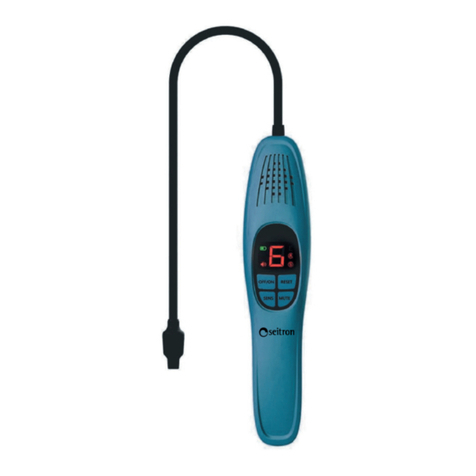GENERAL DESCRIPTION
The GS-40 is a completely self contained combustible gas leak
detector designed to pinpoint gas leaks in the most demanding
applications. An efficient and sensitive gas sensor is combined
with solid state circuitry which provides an audible alarm that
increases in pitch as the concentration of the gas increases. A
visual indication is also provided as well as provisions for an
earphoneforuseinnoisyenvironments.
The sensor has been extensively tested and averages a useful
life of five years in normal operation. The sensor is capable of
responding to a wide range of combustible gases and other
toxic contaminants. Response levels as low as 25 ppm are
possible.
A modern design, combined with an efficient heated Tin Oxide
sensor, allows long operating life from a battery pack of only 4
AA cells. This allows for a very portable, lightweight instrument
featuring an 18 inch—46 cm—flexible metal probe capable of
reachingthemostdifficultlocations.
The operation of the GS-40 is fully automatic; no manual
adjustment is needed to obtain the full benefits of its unique
sensitivityandstability. Simplyturnthe ON-OFF switchtoeither
its HI or LO sensitivity positions, wait a short period of time
while the instrument automatically warms up the sensor, and
balances itself to the surrounding atmosphere, and the GS-40
willstart itsaudible alarmat aslow tickingrate to signal that it is
ready to search for leaks. During the warm up time, a bright red
LED signals the state of the battery pack: fully illuminated if the
batteriesareOKordimlylitifthe batteriesneedchanging.
The sensor in the GS-40 has a normal life of over 5 years.
However, if accidental damage to the sensor occurs by getting
wet or clogged, it can be easily replaced as indicated in the
maintenancesection.
The GS-40 is not intrinsically safe in Class 1, Division 1
atmospheres and should be turned on and off in areas where
nocombustiblegasesarepresent.
3











